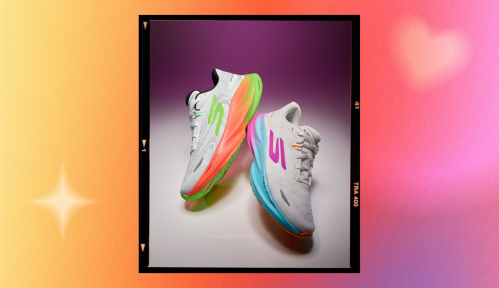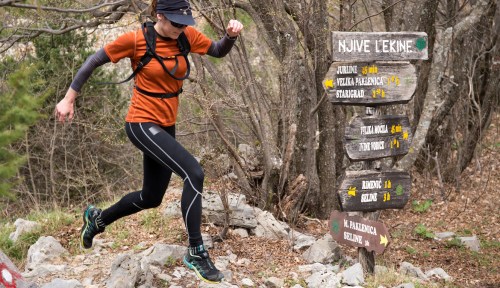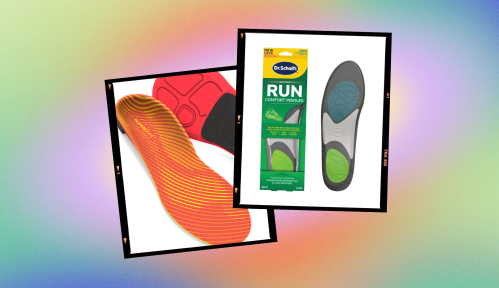Our editors independently select these products. Making a purchase through our links may earn Well+Good a commission
The 9 Best Shoes for Walking on Ice, According to Experts
Podiatrists and outdoor experts share what to look for in the best shoes for walking on ice, and offer some product recommendations, too.
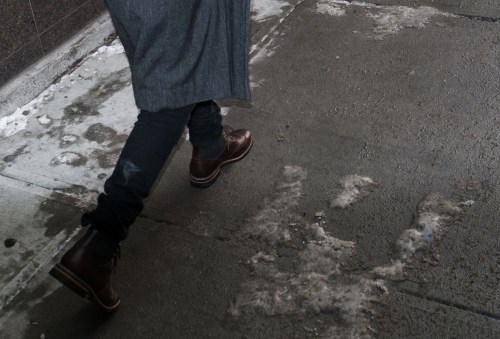
It’s not easy to walk on an icy sidewalk. Still, it’s often—or at least, occasionally—a must-do for those who live in frosty climates and want (or need) to, you know, leave their house. To help you… not so much skate, but at least safely commute through wintry weather, professionals offer advice on what to look for in footwear, and their specific recommendations for the best shoes for walking on ice.
Experts in This Article
board-certified podiatric surgeon based in Tennessee
podiatrist and member of the Vionic Innovation Lab
board-certified podiatric surgeon and founder of Gotham Footcare
speciality maintenance manager at Rush Creek Lodge
expedition coordinator at Ultimate Kilimanjaro
Best shoes for walking on ice at a glance
- Best traction: Kodiak Chadsey Arctic Grip Winter Boot ($120)
- Best style: Columbia Ice Maiden II Snow Boot ($100)
- Best support: Vionic Lani Lace-up Boot ($170)
- Best slip-on: Merrell Coldpack Ice Waterproof Slip-on Sneaker ($103)
- Best overshoes: Tingley Winter-Tuff T1350 Ice Traction Stretch Rubber Overshoes ($64)
- Best cleats: YakTrax Traction Cleats ($19)
- Best for hiking: Salomon X Ultra 4 Mid Winter Thinsulate Climasalomon ($165)
- Best running shoe: Hoka Women’s Speedgoat 4 Gore-Tex ($128)
What to look for when buying shoes for ice
1. Traction
One of the most important characteristics to consider in an ice-friendly shoe is a durable and stable slip-resistant rubber outsole that provides traction and grip, says podiatrist and Gotham Footcare founder Miguel Cunha, DPM. “Shoes with advanced traction rubber outsoles, large lug treads, arctic grip technology, and carbide tip studs provide increased stability and traction to keep you from wobbling on icy pavements,” he says. “When looking specifically for ice shoes, it is important to have spikes or studs on the bottom, this will ensure you are not slipping or falling while on excessively wet spots,” adds Shawn Richards, an Expedition Coordinator at Ultimate Kilimanjaro.
2. Materials and Insulation
Slipping isn’t the only hazard of trying to trek through icy climates; you’ll also want to keep your feet as warm as possible, and for this reason, insulation is an important consideration, too. “Proper insulation is critically important to protect your feet from frostbite and keep your feet feeling comfortably warm and toasty,” says Dr. Cunha. “Check the temperature rating of your shoes and look for shoes lined with fleece, sheep wool, and Thinsulate for superior warmth and insulation.” In addition, Richards suggests looking for shoes that are made of rubber or neoprene, as these will be the most effective non-slip options.
3. Waterproofing
It likely goes without saying that you’ll also want to keep your feet dry when walking on icy surfaces, but such precautions go beyond comfort. Ice can melt and cause dampness inside shoes that might result in frostbite, irritation, and infection, says Dr. Cunha. So, you’ll want to look for shoes that are waterproof or water-resistant. “The most breathable, durable, waterproofing material is Gore-Tex,” he says. “Shoes that are made of 200G PrimaLoft Silver Eco insulation, neoprene, leather, PU, PVC, or rubber also offer protection against water.”
4. Comfort
Just because you’re prioritizing a host of criteria you don’t have to think about with your everyday shoes when looking for ice-friendly kicks doesn’t mean you shouldn’t continue to prioritize proper support and comfort in order to avoid injury and pain in your feet and body, says Dr. Cunha. He suggests looking for shoes made with thick, faux fur linings for long-lasting warmth, wide toe boxes to accommodate your forefoot (read: not smush your toes), and compression-molded EVA midsole footbeds with deep cushioned heel cups to provide your feet with comfort, stability, and shock absorption (especially if you’ll be walking or hiking distances).
Best shoes for walking on ice
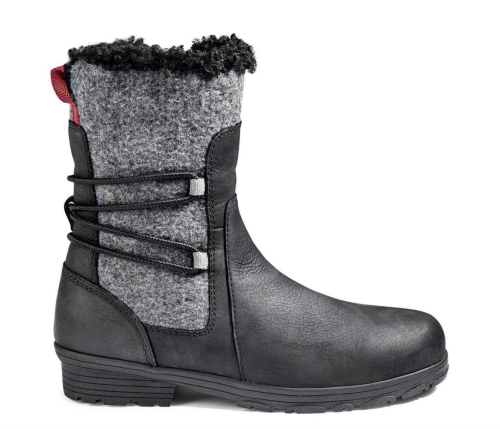
Best traction: Kodiak Chadsey Arctic Grip Winter Boot — $120.00
One of Dr. Cunha’s top picks for icy walks is this winter boot from Kodiak, which meets all of his above criteria. The shoe’s Vibram Arctic Grip outsole offers incredible traction, its PrimaLoft P.U.R.E. insulation offers warmth, its OrthoLite comfort foam footbed offers comfort, and the boot is waterproof… to boot! As an added bonus for those looking to minimize their closet’s impact on the environment, many of the Chadsey’s components are made from recycled materials, too.
Pros:
- Waterproof
- Sole with traction
- Insulated
Cons:
- Expensive
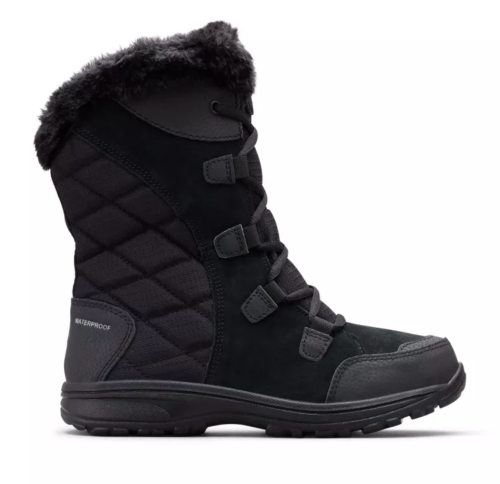
Best style: Columbia Ice Maiden II Snow Boot — $100.00
Dr. Cunha also recommends this stylish ice boot made by Columbia. It’s waterproof, features a Techlite midsole for comfort, OmniGrip technology for traction and, like the Kodiak boot, coziness even in the coldest of temps thanks to faux fur. To add to that warmth, it might feel good to know that this boot is produced in a factory supporting HERproject, a program that strives to empower women working in global supply chains, too.
Pros:
- Waterproof
- Insulated
- Cushioned
Cons:
- Some reviewers say they run small
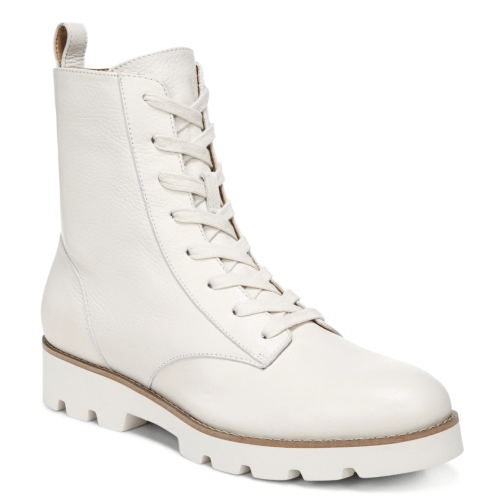
Best support: Vionic Lani Lace-up Boot — $170.00
This cute boot comes recommended by Jaqcueline Sutera, DPM, a board-certified podiatrist (who is also a Vionic Innovation Lab member, FWIW). She says it offers what she considers to be the most important feature to look for in a shoe meant for walking on ice: a lugged-type sole that offers traction and stability. But because they’re Vionic kicks, they’re also specifically designed to be more supportive than the average shoe thanks to Vio-Motion footbed technology. Personally, I’m into them because they’re total dupes for my white Dr. Marten boots, which garner a lot of positive attention but are supremely uncomfortable. (Sorry, Doc!)
Pros:
- Supportive
- Water-repellent
- Lightweight
Cons:
- Expensive
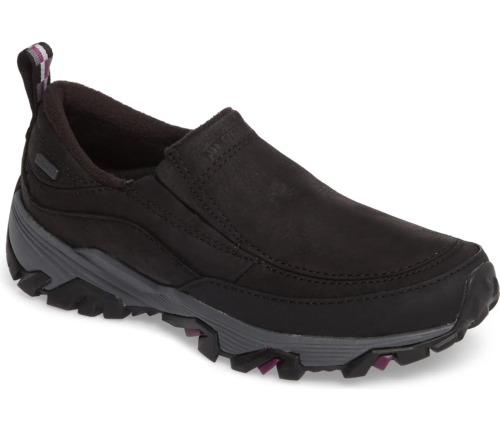
Best slip-on: Merrell Coldpack Ice Waterproof Slip-on Sneaker — $103.00
This relatively understated sneaker, meanwhile, is a favorite of podiatrist Cary Gannon, DPM. It features that aforementioned Arctic Grip sole for exceptional traction, a removable cushioned footbed with arch support, and it’s waterproof, too. The best selling point for this shoe, however, may be that it’s a slip-on, because after so many months spent in low maintenance clothing, I’m surely not the only one who’s finding it difficult to go back to doing anything but the least when getting dressed.
Pros:
- Waterproof
- Fleece lining
- Sole has traction
Cons:
- Doesn’t keep ankles warm

Best overshoes: Tingley Winter-Tuff T1350 Ice Traction Stretch Rubber Overshoes — $64.00
This shoe is also a favorite of Dr. Gannon’s. It’s actually designed to be worn over regular shoes and is recommended for those in on-your-feet, outdoor industries such as transportation, utilities, etc. Which isn’t to say you couldn’t slip these bad boys on to commute home from a bar on a wintery night, because… safety first. They’re pretty hardcore in that they feature actual cleats on the sole for maximum traction, but they’re comfortable enough to be worn for long periods of time (e.g. 10-hour workdays, thanks capitalism!), and they offer weather protection up to the ankle, too.
Pros:
- Waterproof
- Slip resistant
- Fits over regular shoes
Cons:
- Doesn’t keep ankles warm
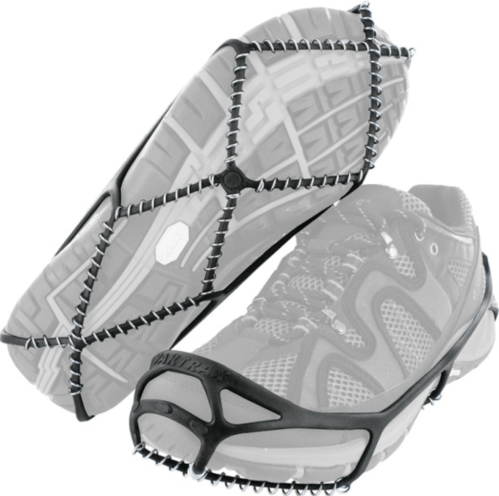
Best cleats: YakTrax Traction Cleats — $19.00
This nifty invention, also a rec from Dr. Gannon, takes the whole I-don’t-feel-like-buying-a-whole-new-shoe thing to the next level. It’s basically a pair of traction cleats you can fit over your sneakers in order to walk safely on the slipperiest of surfaces. Honestly, they’re kind of genius because you can slip them off when you arrive at your destination to show off your sneaks, and they’re only $20. Still, it must be noted that these offer nothing in the way of warmth, so you’ll probably want to pair them with your thickest socks if you do opt to go this budget-friendly route.
Pros:
- Fits over regular shoes
- Lightweight
- 360 degrees of traction
Cons:
- Some reviewers say they fall off
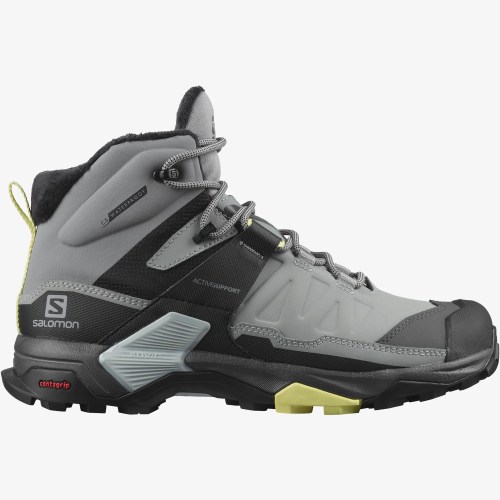
Best for hiking: Salomon X Ultra 4 Mid Winter Thinsulate Climasalomon — $165.00
These hiking boots are lightweight and warm, and have excellent traction on ice and snow, says Patrick Michel, Rush Creek Lodge‘s Speciality Maintenance Manager and year-around outdoor enthusiast. “It is a mid-boot, meaning it goes above the ankle and has very good support for the foot/ankle in muddy or unstable ground,” he says. They’re water-repellent, insulated, have a protective toecap, and provide lateral support for your feet.
Pros:
- Water-repellent
- Insulated
- Grippy outsole
Cons:
- Expensive
- Not insulated
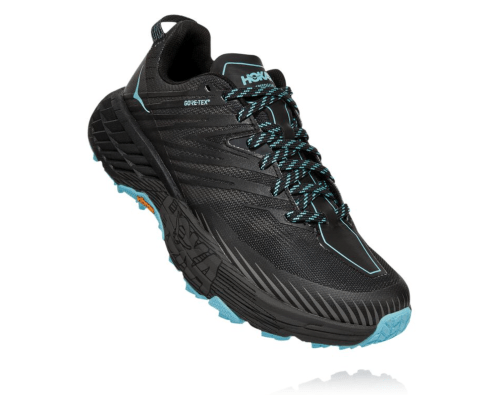
Best running shoe: Hoka Women's Speedgoat 4 Gore-Tex — $128.00
Finally, Dr. Gannon recommends this trail running shoe, which features a Gore-Tex waterproof bootie to keep your jogging feet dry, a lightweight foam midsole and a wide forefoot for comfort, and a Vibram Megagrip rubber outsole with stepped lugs for traction on even the slickest of surfaces. It’s an optimal option for those who are determined to continue running through rain, sleet, snow, and hail, or who just want to like they are.
Pros:
- Water-resistant upper, waterproof bootie
- Lightweight and breathable
- Grippy outsole
Cons:
- Doesn’t keep ankles warm
Sign up for the Well+Good SHOP Newsletter
Get exclusive deals on wellness, beauty, fitness, and food products that have been hand-picked by our editors.
Got it, you've been added to our email list.

